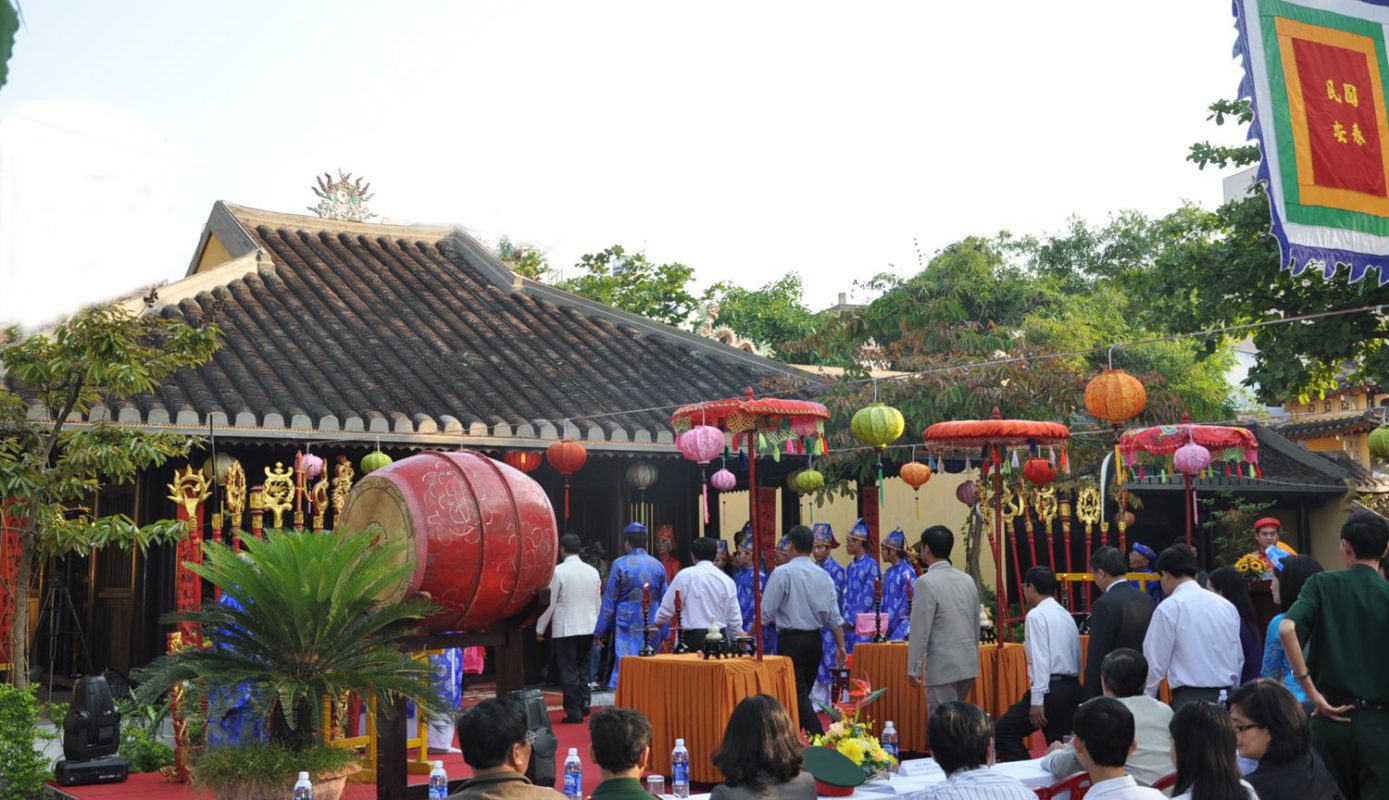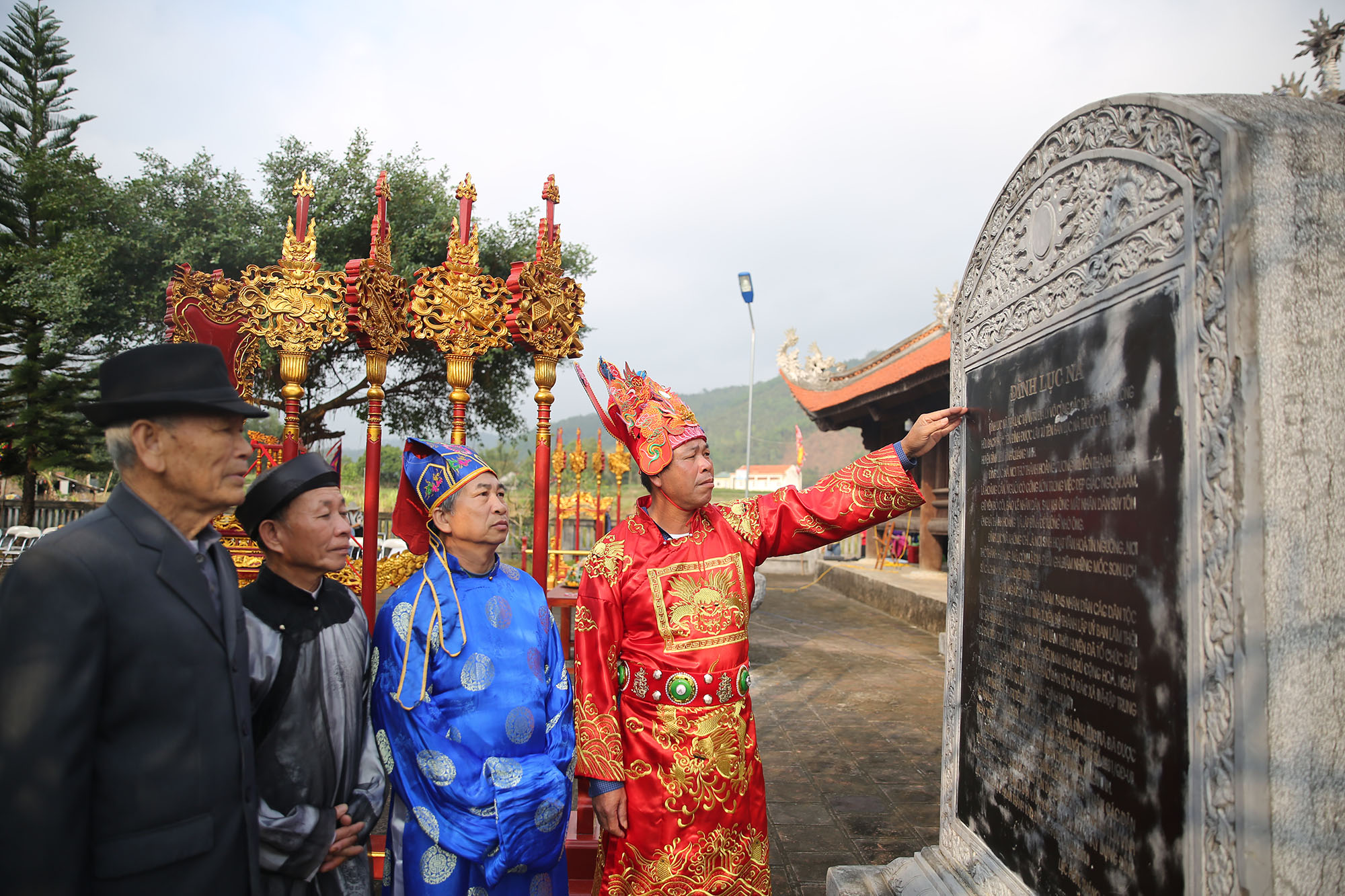The Historical and Cultural Relic of Hải Chi (Dạ Village Communal House)
Last Updated on 1 January, 2025 by admin
The Hải Chi revolutionary base, centred around the Dạ Village Communal House, is a historical and cultural landmark of profound significance. Situated in a serene rural setting, this site bears witness to the resilience and patriotism of the Vietnamese people during their struggles against colonial and imperial powers. Recognised as an exemplary revolutionary base, the Hải Chi communal house preserves a unique blend of historical memory and traditional culture. Visiting this site was not just a journey through history but also a personal experience that left me deeply moved.

Formation and Historical Role of the Hải Chi Base
The origins of the Dạ Village Communal House date back to the 18th century when it served as a communal hub for village gatherings and ancestor worship. Its purpose evolved during the resistance movements against French and American forces, transforming it into a pivotal revolutionary base.
- A Strategic Revolutionary Hub: As I walked through the spacious hall of the communal house, I could almost hear the echoes of secret meetings and impassioned speeches that had taken place here. Knowing this very spot was once a centre of revolutionary planning gave me goosebumps. Standing in the room where history was made, I felt a sense of connection to the brave individuals who had strategised to change the course of Vietnam’s future.
- A Space of Unity and Resistance: My guide, a local elder, recounted stories of how the villagers came together to support the revolution. From providing food and shelter to spreading information under the cover of night, their courage and resourcefulness were inspiring. Listening to these tales brought the site’s history to life in a way that no textbook could.
Unique Architecture and Cultural Features
The Dạ Village Communal House is an architectural marvel, seamlessly blending traditional Vietnamese craftsmanship with historical significance.
- Traditional Vietnamese Architecture: The intricate wooden carvings of dragons and phoenixes caught my eye the moment I stepped inside. Each detail, from the tiled roof to the sturdy wooden beams, told a story of craftsmanship passed down through generations. Running my fingers across the smooth, timeworn wood, I felt a tangible connection to the past.
- Interior and Artefacts: The main hall housed a beautifully arranged altar, flanked by stone steles and poetic inscriptions. My guide explained the symbolic meanings behind the carvings of lotus flowers and bamboo—icons of resilience and purity. Sitting on the cool stone steps of the altar, I reflected on how this site had evolved from a place of worship to a beacon of resistance.
- Preserved War Relics: Exploring the preserved bunkers and secret meeting areas, I could almost imagine the urgency and determination of those who had used these spaces. Crawling into one of the hidden shelters, I felt a mix of curiosity and reverence. It was humbling to think about the sacrifices made by those who had once sought refuge here.
Historical and Cultural Significance
The Dạ Village Communal House is both a historical record and a vibrant cultural hub, offering profound lessons and experiences for visitors.
- Historical Value: Walking through the site, I was constantly reminded of the resilience and unity of Hải Chi’s residents. My guide shared a story about a pivotal meeting held in the communal house, where local leaders planned a surprise attack that became a turning point in their struggle. Hearing this made me appreciate the depth of strategy and courage behind their actions.
- Cultural Value: During my visit, I was lucky enough to witness a traditional festival held in the communal house. Villagers dressed in vibrant costumes performed ceremonial dances and chanted prayers, seamlessly blending their spiritual heritage with a tribute to their revolutionary past. It was a moving experience that highlighted the enduring spirit of the community.
Tourism and Conservation Efforts
The communal house is a focal point for both historical tourism and preservation, ensuring its legacy endures for future generations.
- Historical Tourism and Cultural Experiences: Exploring the site was an enriching journey. The guides, many of whom are descendants of the revolutionaries, shared stories with such passion that it felt like stepping back in time. Joining the festival celebrations allowed me to actively participate in the community’s living traditions, creating memories that will stay with me forever.
- Preservation and Community Engagement: While walking around the site, I noticed villagers repairing sections of the roof and repainting wooden beams. My guide explained how locals take pride in maintaining the site, contributing both labour and resources to its upkeep. Witnessing their dedication inspired me to make a small donation, knowing it would support the preservation of this historic treasure.
Personal Reflections
Visiting the Dạ Village Communal House was more than just a historical tour—it was an emotional journey. Sitting by the lotus pond in the courtyard, surrounded by the tranquillity of the countryside, I felt a deep sense of gratitude for the sacrifices of those who had fought for freedom. The stories of resilience and courage shared by the locals left a profound impact on me, reminding me of the power of unity and the importance of preserving history.
One of the most memorable moments was when a local woman invited me to her home after my tour. Over a cup of fragrant green tea, she shared family stories of her grandfather’s role in the revolution, adding a personal touch to the history I had just explored. Her hospitality and pride in her heritage made me feel welcomed and connected to the community.
Conclusion
The Dạ Village Communal House in Hải Chi is far more than a historical site—it is a living testament to Vietnam’s cultural and revolutionary spirit. From its traditional architecture to its pivotal role in the nation’s history, it offers visitors a unique opportunity to step back in time and reflect on the values of unity, resilience, and courage.
For me, this visit was not just an educational experience but a deeply personal one. The connections I made with the locals, the stories I heard, and the atmosphere of the communal house all combined to create a lasting impression. If you’re seeking a journey that combines history, culture, and genuine human connection, I cannot recommend the Dạ Village Communal House enough. Let it inspire you, as it did me, to appreciate and protect the treasures of the past.




